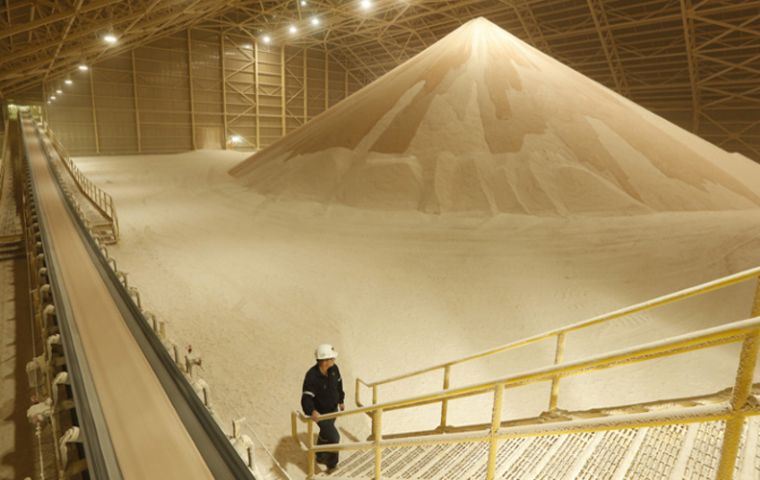MercoPress. South Atlantic News Agency
Potash prices have more than trebled and keep climbing
 Soy, corn, wheat, coffee, rice all need fertilizers to have healthy crops with profitable yields
Soy, corn, wheat, coffee, rice all need fertilizers to have healthy crops with profitable yields Potash prices, a key element used as fertilizer have more than trebled compared to a year ago. The mineral which was trading at US$ 300 a ton in early 2021, has now skyrocketed to US$ 1,100 a ton, and with not many prospects of returning to normal levels given the ongoing month-long war in Ukraine following on the Russian invasion.
Potassium is one of the three essential chemical fertilizers employed in large-scale agricultural production. Next to nitrogen and phosphorus, the chemical extracted from the rock subsoil makes up the combination of elements known as NPK, used in soybean, coffee, corn, wheat, rice, sugar cane crops, and fruits as well.
The biggest hike in the global price of potash recorded to date occurred between 2008 and 2009 when the US mortgage banking crisis spread to the rest of the world economy, and the price reached US$ 700 a ton, .
For Brazil an agricultural powerhouse the challenge is enormous. Brazil imports 85% of NPK fertilizers, but with potash dependence is even steeper, 96%. Both Ukraine and Belarus, (a close ally of Russia) are the main global suppliers of potash. And any new sources need time to be developed and extraction is a time consuming process.
Potassium mines are generally located at a depth that ranges from 600 to 800 meters. However, merely reaching these depths is not enough. It is necessary to open tunnels through which large machines circulate. Sometimes even trucks are employed in these operations, meaning heavy investments and months of work.
According to Agriculture ministry figures, Brazil has a three month fertilizer stock, and is desperately moving to overcome any future shortages. Potassium has an average participation in agricultural production costs ranging between 30% and 40%, depending on region and crop.




Top Comments
Disclaimer & comment rulesCommenting for this story is now closed.
If you have a Facebook account, become a fan and comment on our Facebook Page!